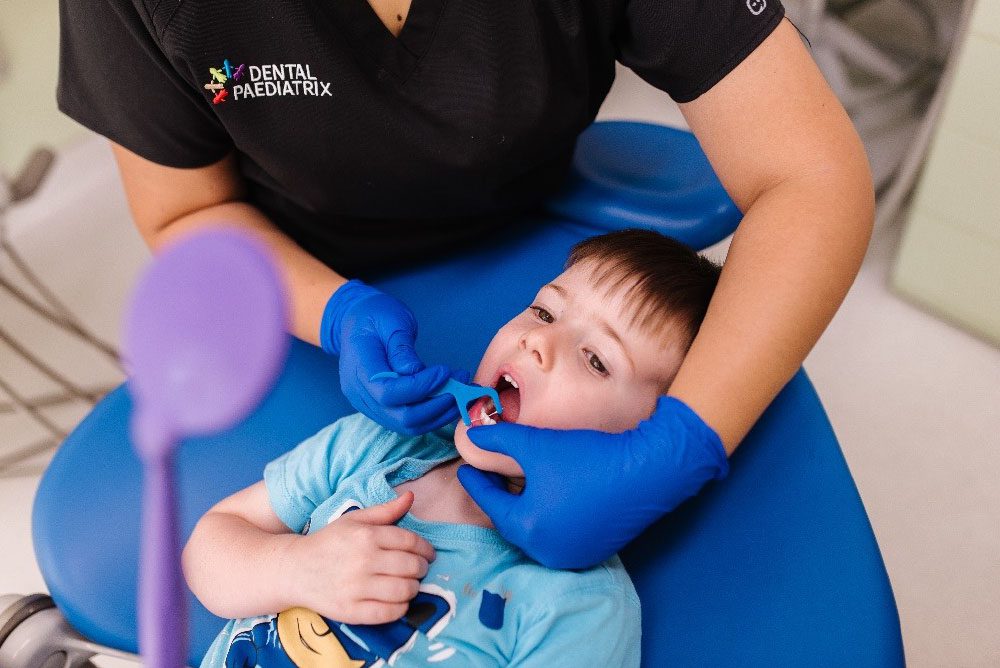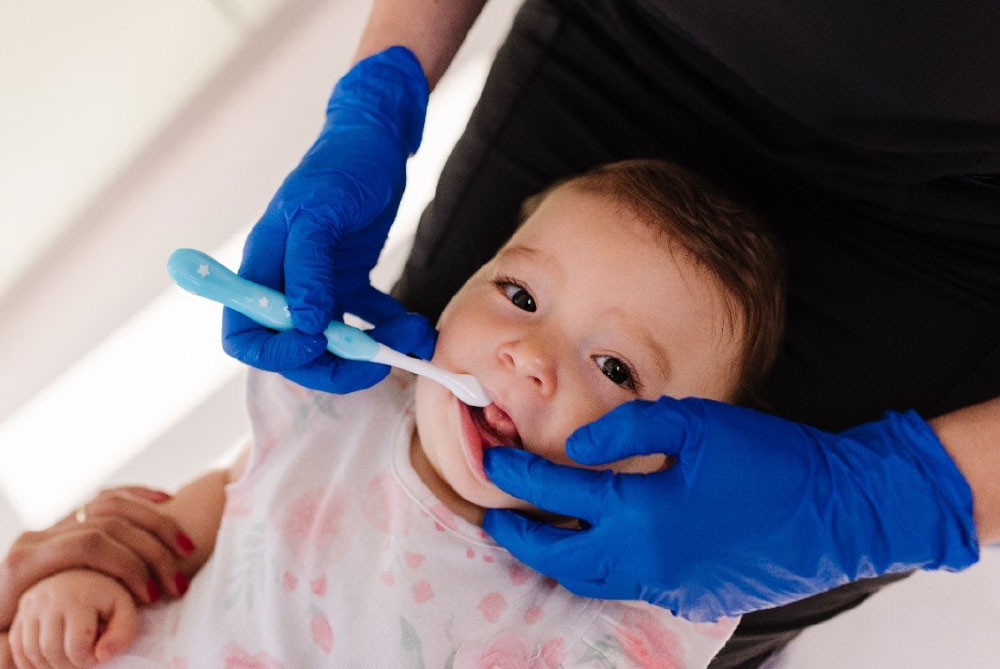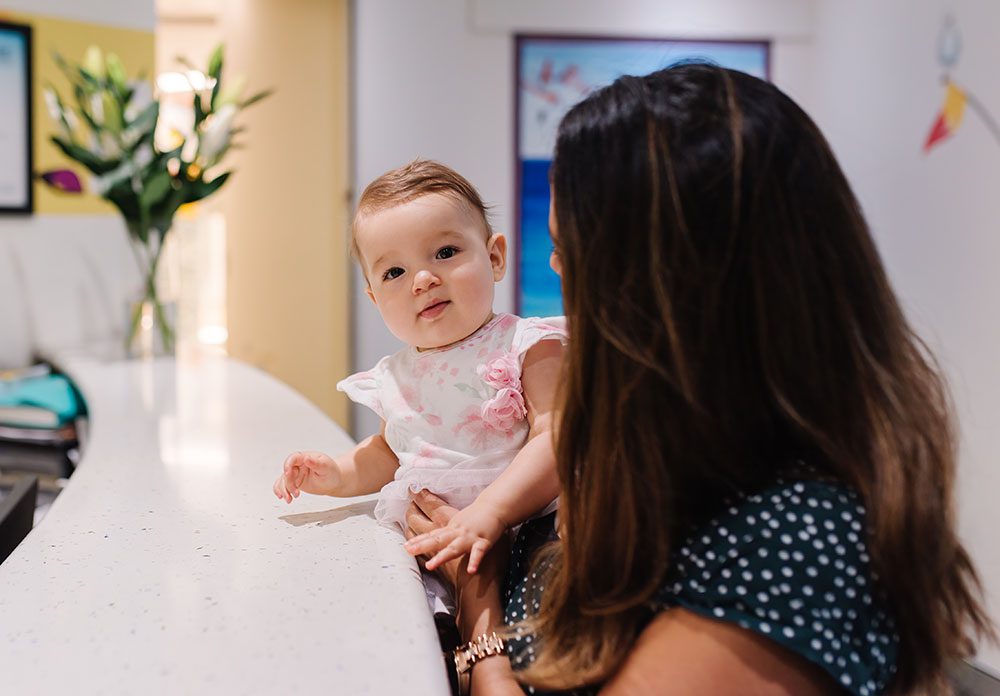When do I need to start brushing my baby’s teeth?
Did you know that your baby’s oral hygiene routine should start even before they have teeth? It is recommended to clean the gums after feeding by wiping with a damp washcloth or gauze. By cleaning your baby’s gums, you are establishing a routine and getting them used to having different sensations in their mouth. When the first tooth arrives, it will be easier to transition into a proper brushing session.
Hint: If your child is teething, consider placing the washcloth in the fridge for a few minutes as the coolness will sooth the baby’s tender gums.
As soon as the very first tooth erupts, it is vulnerable to tooth decay which is why it is important to brush twice a day. When any two teeth are touching, it was time to add flossing into the night-time routine.

Why is it important to brush baby teeth?
Your child’s teeth are needed to chew, smile, and talk – All very important functions! Furthermore, baby teeth play an important role in the alignment and spacing of the permanent teeth as they are placeholders for the next set. Starting good habits early on will set them up for life. Dental decay is a preventable condition and caring for teeth starts at home.
Knee to knee technique for brushing
The knee-to-knee position is a great way for parents to brush their baby’s teeth. Two adults should be sitting facing each other with legs together and the knees touching. Start off with the child sitting facing one parent with legs either side of the person, then lean the child back on the lap of the other parent. The parent closest to the head will do the brushing while the other parent can hold the child’s hands and distract them.
If you are alone, sit on the floor or bed with their head in your lap, and use your legs to hold them and keep arms and legs still.

How to Brush
Teeth should be brushed every morning and evening for 2 minutes. Parents should assist in brushing until 8 years of age.
Teeth have 3 surfaces that should be brushed: outside (face in the cheeks), tops (biting surfaces) and inside (facing the tongue). For better visibility, use a clean index finger to pull cheeks and lips away from the teeth.
The inside and outside surfaces should be brushed gently using small circular motions. Make sure that the areas where the teeth meet the gums are included in the circular motions to ensure that the gums stay healthy as well. The tops of the teeth should be brushed in a scrubbing motion.
At 18 months, you can start to introduce a rice grain amount of fluoride toothpaste to help strengthen the teeth. As they can not spit, it may be necessary to wipe away the toothpaste with a cloth or gauze.

Do not sleep with milk bottle
Dairy milk, formula milk, and breastmilk has sugar. It is important to not give your child a bottle in the crib without cleaning their teeth afterwards. The milk will remain on their teeth for longer as less saliva is produced when they are asleep and will not be washed away. The sugars will be stagnant which lead to cavities forming. Always try to clean or wipe the teeth after milk.
Wean off the dummy by 3 years
Long term used of dummies or pacifiers can change the shape of the teeth and jaw causing an open bite which is where the front teeth do not touch. It may affect speech development, chewing and breathing habits. Introducing the “dummy fairy” who will take the dummy away and leave behind a present will be a good way to prepare your child to give up the dummy.
First dental visit
We recommend that babies have their first journey to the dentist by their first birthday or when the first tooth appears. Our paediatric dentists will check their teeth, gums, and the entire mouth to make sure it is healthy and developing as expected. They can guide you in the right direction to help you take care of your baby’s oral health and help create a home care routine.
Make an appointment with Dr Jad or Dr Anna for your baby’s first visit today.

